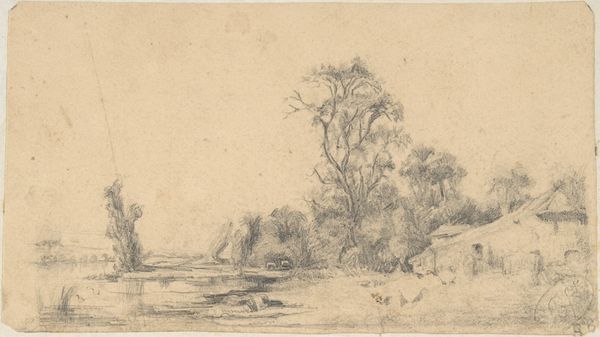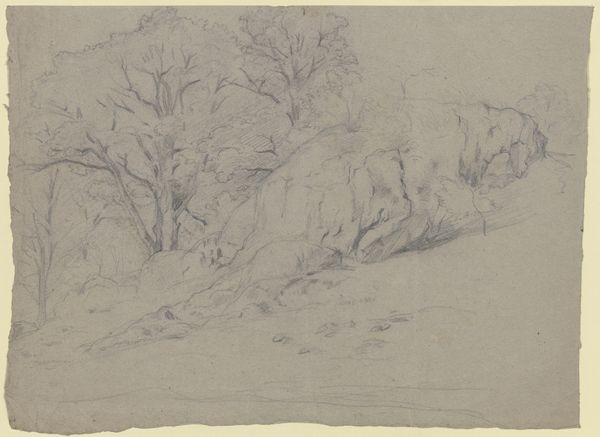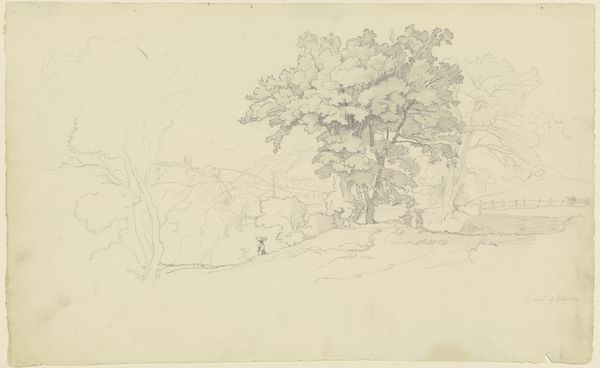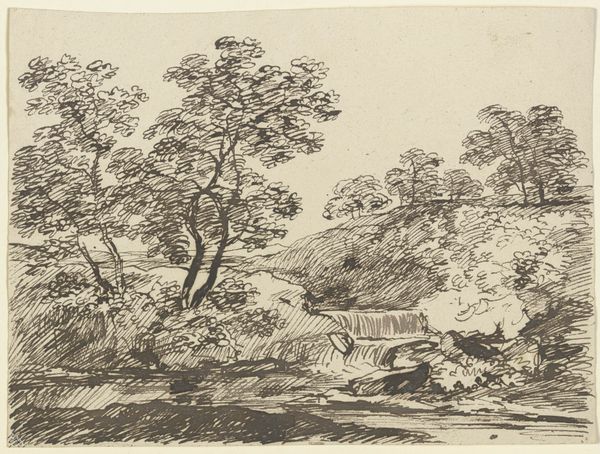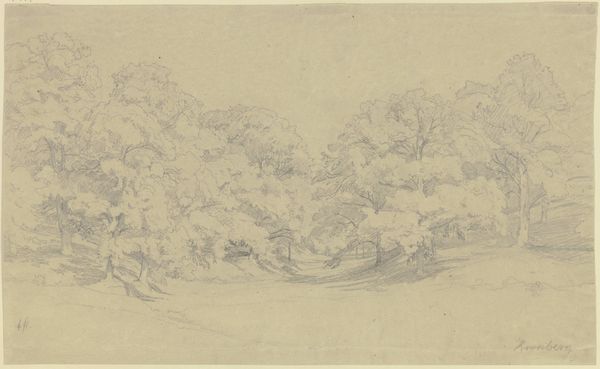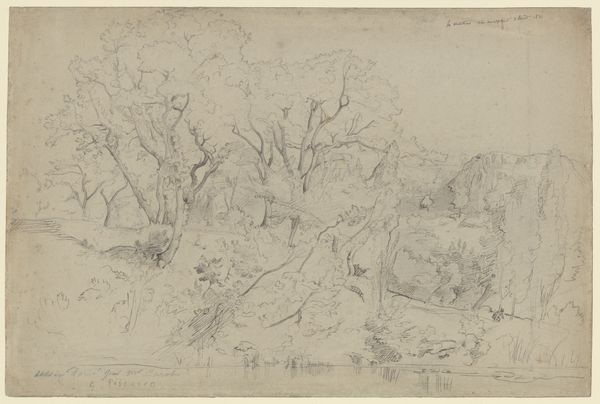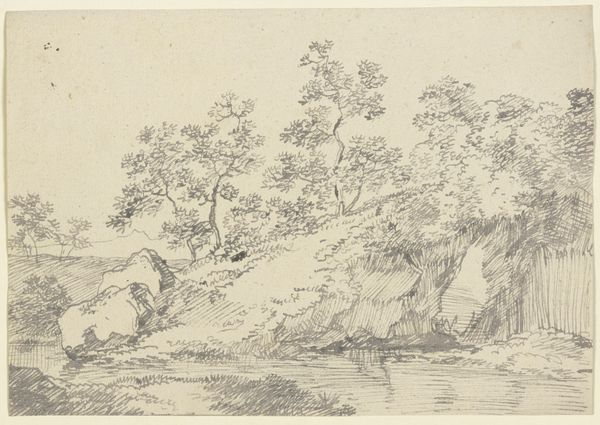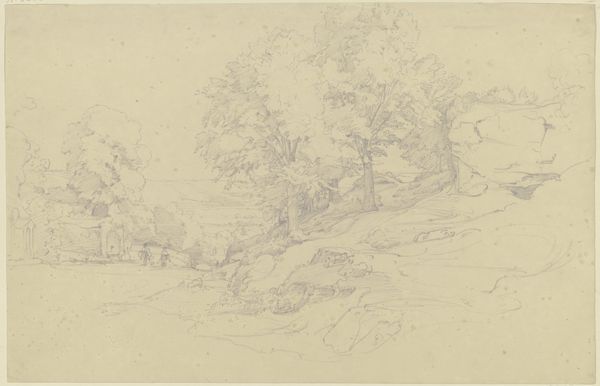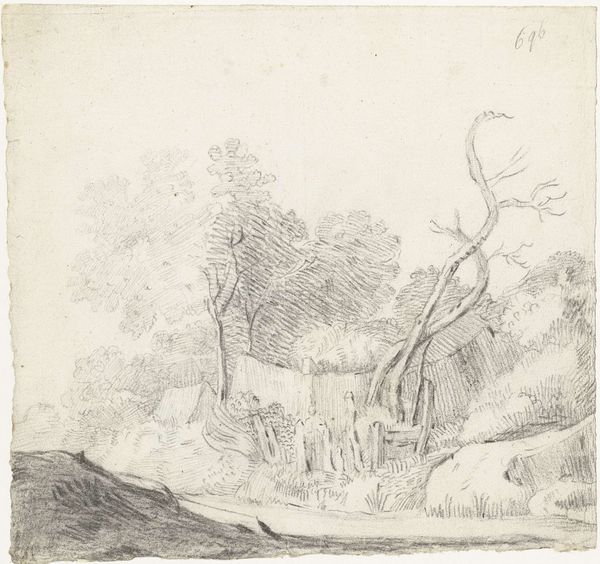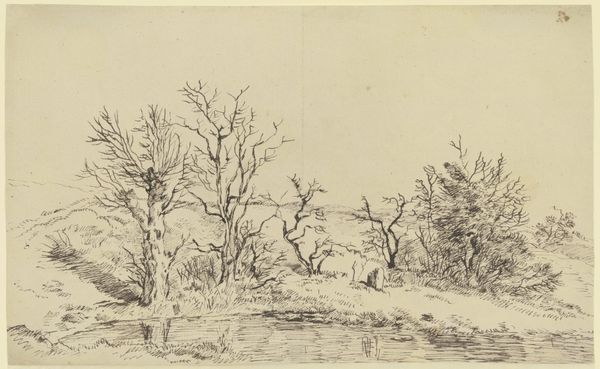
Copyright: Public Domain
Editor: This is Friedrich Metz's "Landscape (Kühruhe)," a pencil drawing on paper from 1854. It feels…quiet. Almost secretive, with the tangled branches obscuring a full view. What’s your read on this piece? Curator: The quietude you perceive reflects the Biedermeier era’s retreat into domesticity and nature. But consider also the burgeoning Romantic nationalism of the time. Landscape art, particularly in German-speaking lands, became heavily imbued with notions of homeland. Does this scene feel particularly 'German' to you in some way? Editor: Hmm, I see what you mean. Maybe in the detailed, almost scientific observation of the natural elements? It does remind me of the meticulous botanical illustrations we've studied. Curator: Precisely! And that realism, while seemingly objective, is deeply entwined with cultural values. Think about who commissioned and consumed these landscapes. Were they simply wealthy patrons appreciating a pretty picture, or something more? Editor: I suppose they might have been asserting a kind of ownership or connection to the land through the image itself? A way of possessing it symbolically. Curator: Exactly! Consider also how these images circulate. A drawing like this could be reproduced, shared, contributing to a shared vision, a construction, of national identity through depictions of idealized landscapes. Is it propaganda? Perhaps not overtly, but it participates in the cultural project of nation-building. Editor: That's fascinating. I was so focused on the aesthetic beauty of the drawing, but you've really opened my eyes to the political context in which it was created and viewed. I see the landscape…and the land. Curator: And how art helped to build and sell an idea of a place to a nation. Editor: Absolutely, I’ll never look at another landscape drawing quite the same way!
Comments
No comments
Be the first to comment and join the conversation on the ultimate creative platform.
